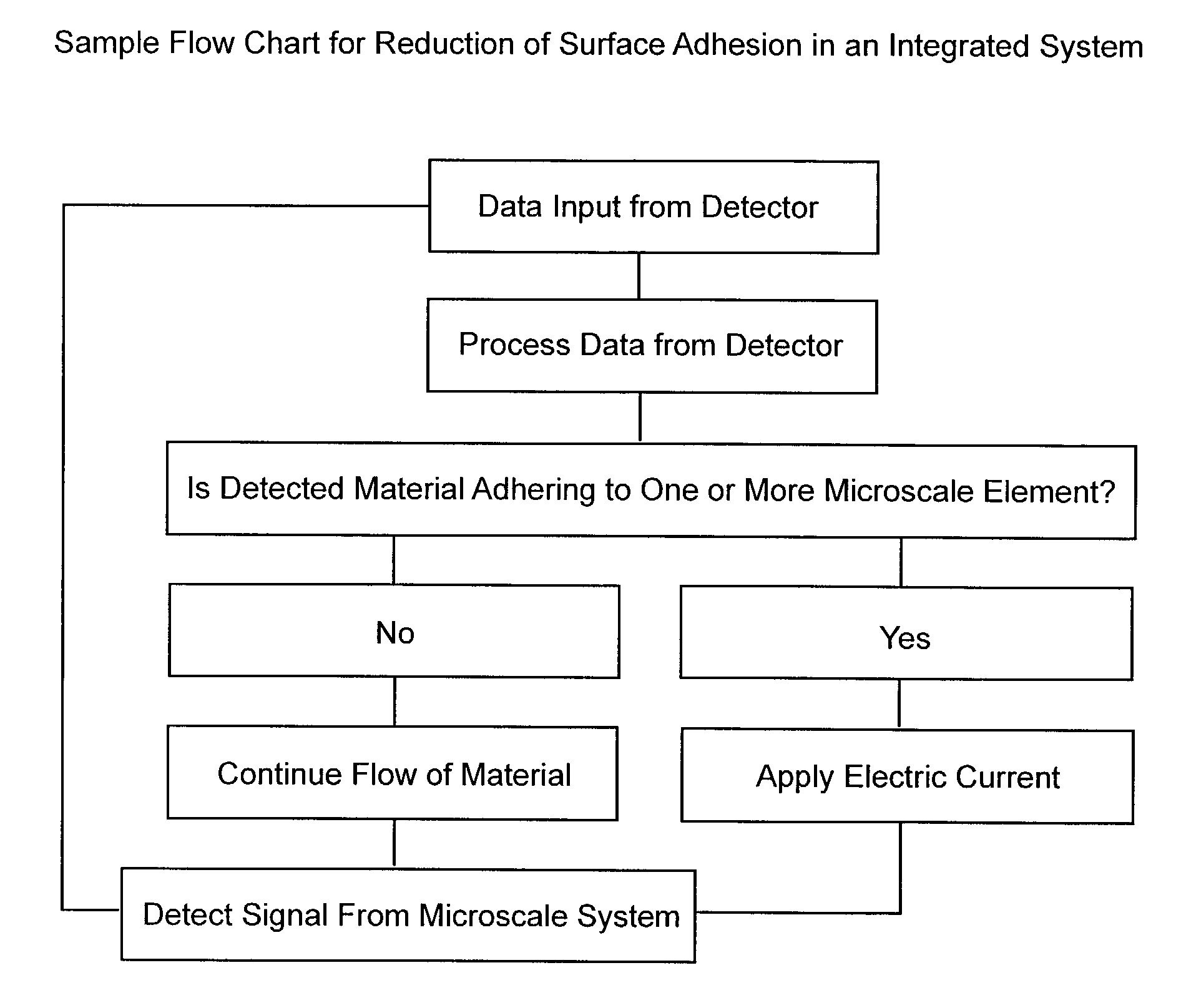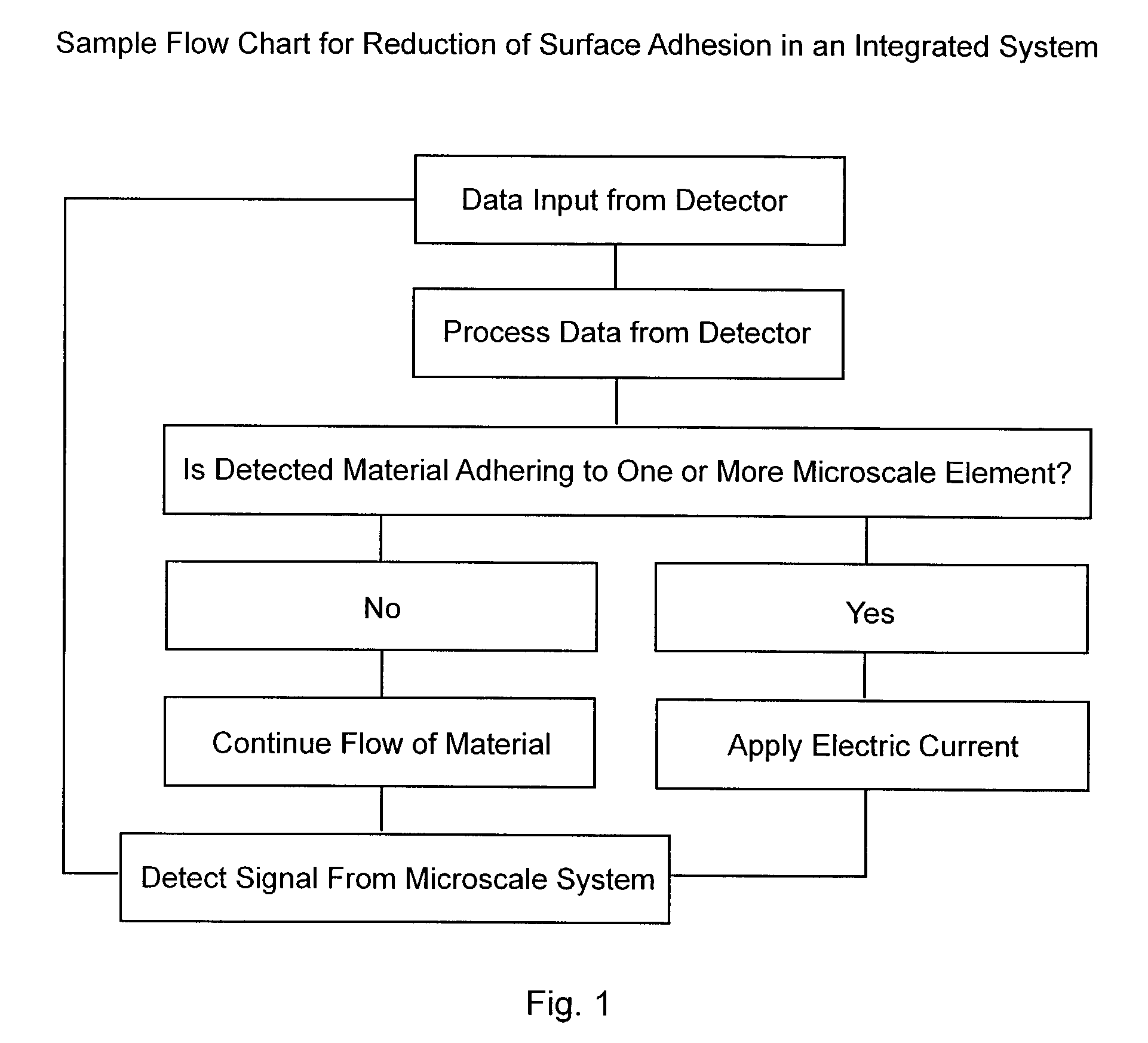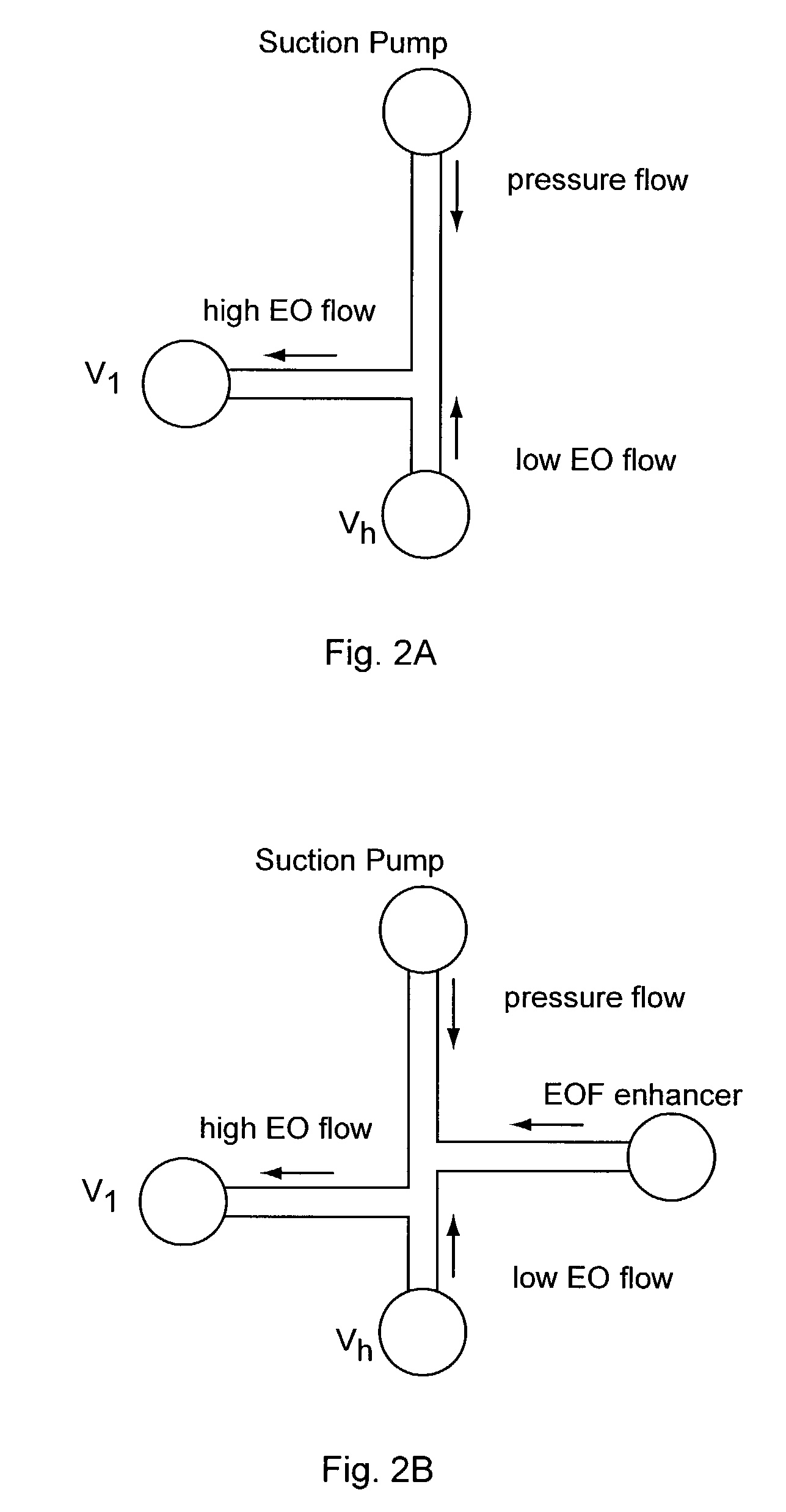Prevention of surface adsorption in microchannels by application of electric current during pressure-induced flow
a technology of electric current and microchannel, which is applied in the direction of instruments, separation processes, laboratories, etc., can solve the problems of unsatisfactory biasing of assay, peak tailing, and creating artifacts, so as to prevent or reduce adsorption of materials and reduce adsorption of proteins
- Summary
- Abstract
- Description
- Claims
- Application Information
AI Technical Summary
Benefits of technology
Problems solved by technology
Method used
Image
Examples
Embodiment Construction
[0032]The invention relates to the reduction and prevention of surface adsorption of materials to microchannel walls and other microscale elements in microfluidic systems. It was determined that binding to the surface of microscale elements was problematic in flowing assays and material separations for proteins, cells, carbohydrates, nucleic acids, lipids and other materials during pressure-based flow of the materials. This was due, in part, to the fact that the rate of flow (flow velocity) of materials at the walls in a microscale channel typically is lower than the rate of flow of the materials in the interior of the microscale channel. This low flow rate increases the time that a material remains in position proximal to a given region of the microscale channel. This increased proximity to a single region leads to formation of strong interactions between the channel region and the material.
[0033]In contrast, in electroosmotic flow systems, maximal material velocity is ordinarily a...
PUM
| Property | Measurement | Unit |
|---|---|---|
| concentration | aaaaa | aaaaa |
| concentration | aaaaa | aaaaa |
| concentrations | aaaaa | aaaaa |
Abstract
Description
Claims
Application Information
 Login to View More
Login to View More - R&D
- Intellectual Property
- Life Sciences
- Materials
- Tech Scout
- Unparalleled Data Quality
- Higher Quality Content
- 60% Fewer Hallucinations
Browse by: Latest US Patents, China's latest patents, Technical Efficacy Thesaurus, Application Domain, Technology Topic, Popular Technical Reports.
© 2025 PatSnap. All rights reserved.Legal|Privacy policy|Modern Slavery Act Transparency Statement|Sitemap|About US| Contact US: help@patsnap.com



